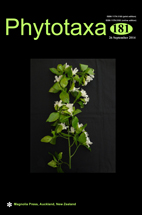Abstract
Roussoella and Roussoellopsis species are mostly known from monocotyledons (large grasses, bamboo and palms). Detailed phylogenies for this group are lacking and thus their family placement and relationships with other genera are unclear. Fresh collections of several Roussoella-like species, including the type species Roussoella nitidula were made from bamboo and palms in Thailand. In order to obtain a phylogenetic understanding of Roussoella-like species within the order Pleosporales, we carried out the phylogenetic analyses of ITS, LSU, TEF1α and RPB2 loci. The 15 target strains formed a well-supported clade (100% BS/1.00 PP) in phylogenetic reconstructions of individual and combined datasets, supporting the introduction of a new family Roussoellaceae. The Roussoellaceae clade can be distinguished into three well-supported sections, namely Roussoella/Roussoellopsis (93% BS/1.00 PP), Roussoella (88% BS/1.00 PP) and Neoroussoella. Based on both morphology and phylogenetic analyses, we introduce Neoroussoella gen. nov., epitypify Roussoella nitidula which is the type species of the genus, and introduce the new species Neoroussoella bambusae, Roussoella chiangraina, R. japanensis, R. neopustulans, R. siamensis, R. thailandica and R. verrucispora.

